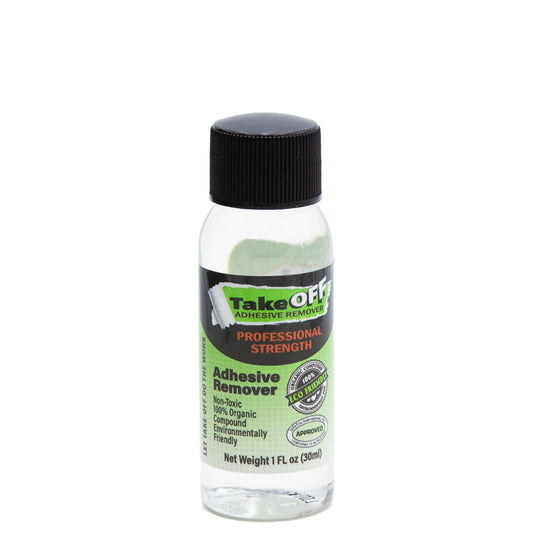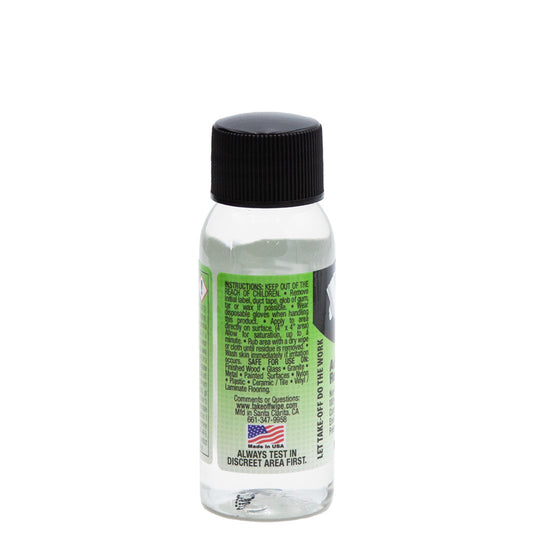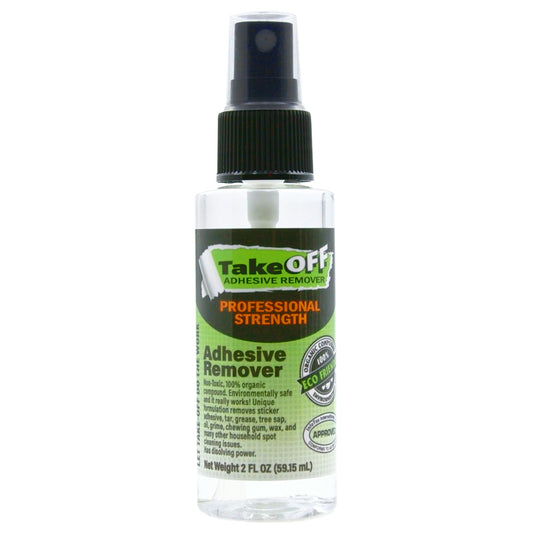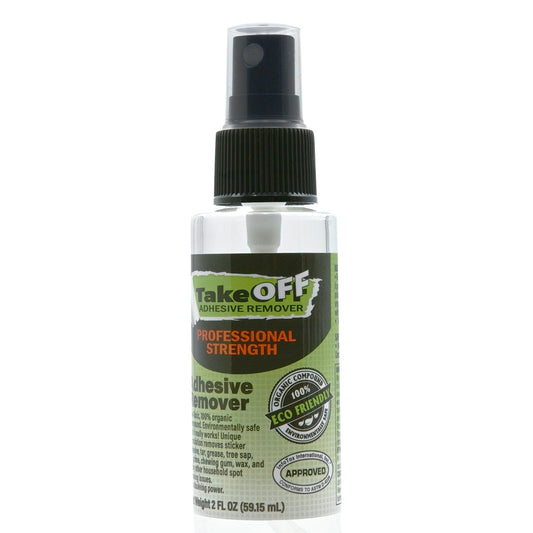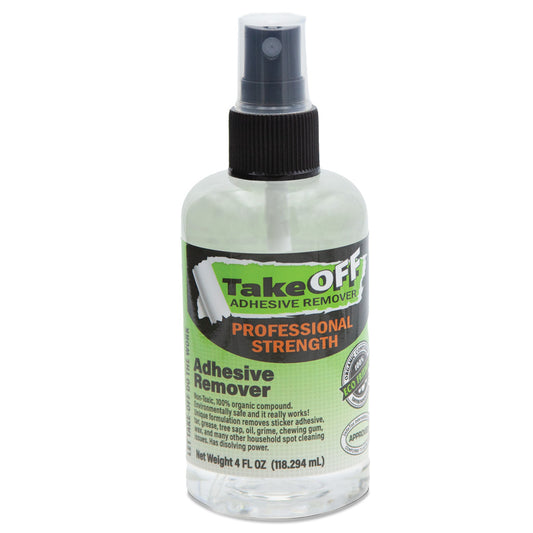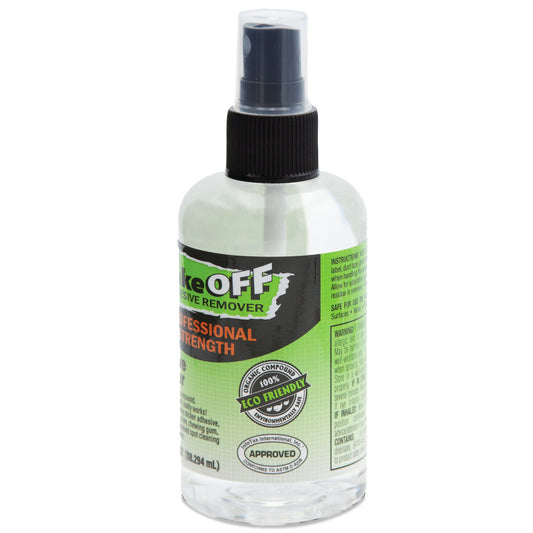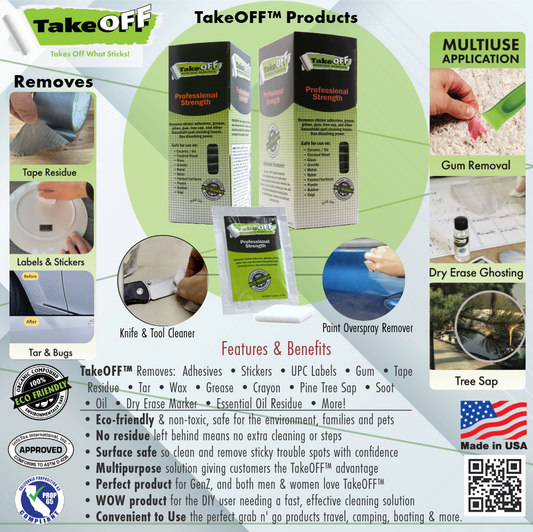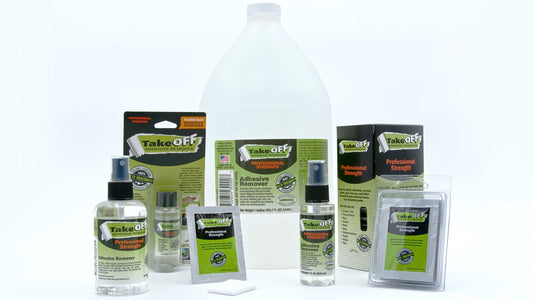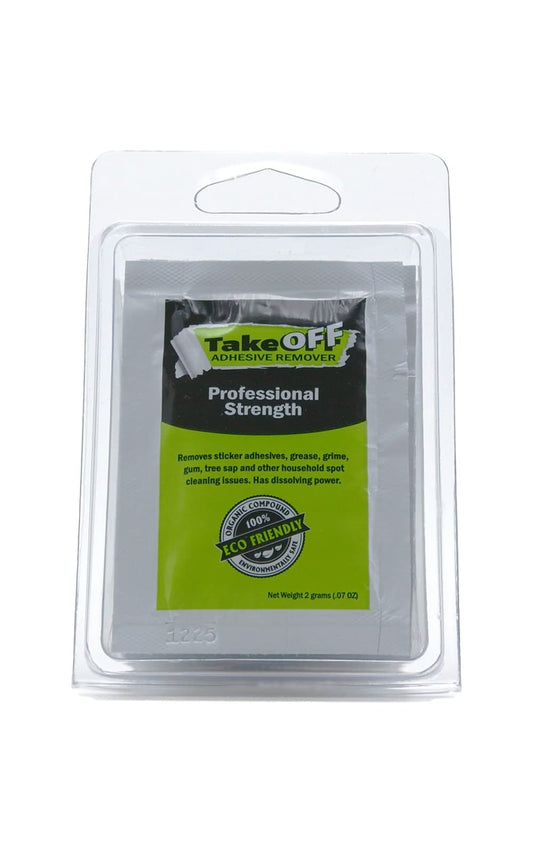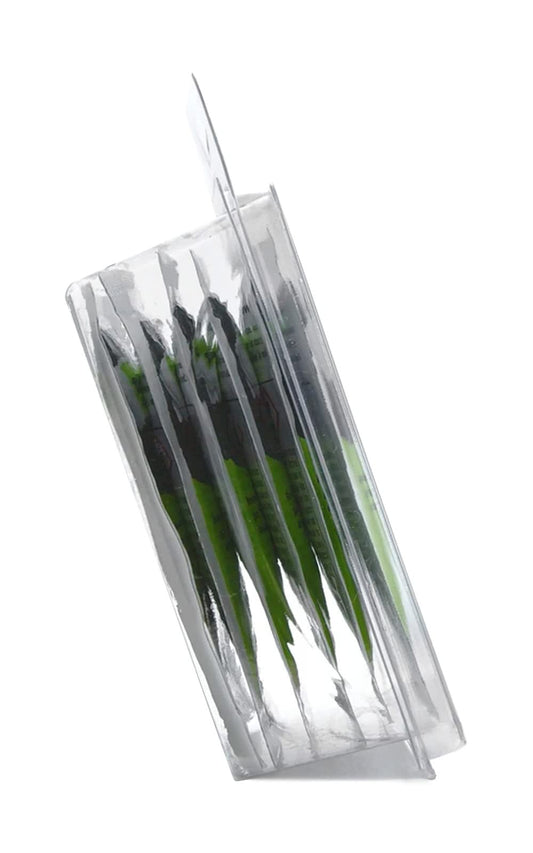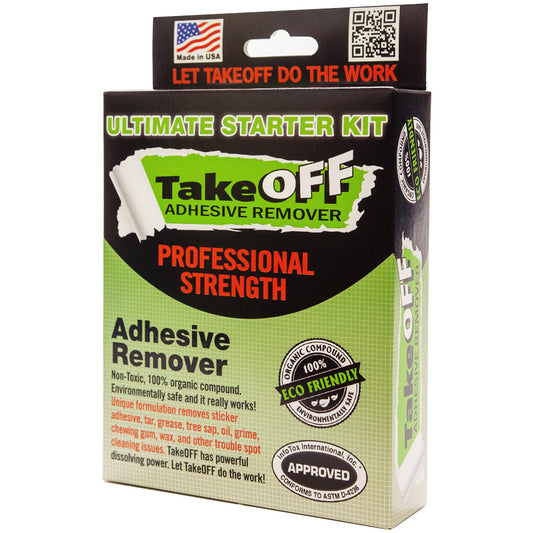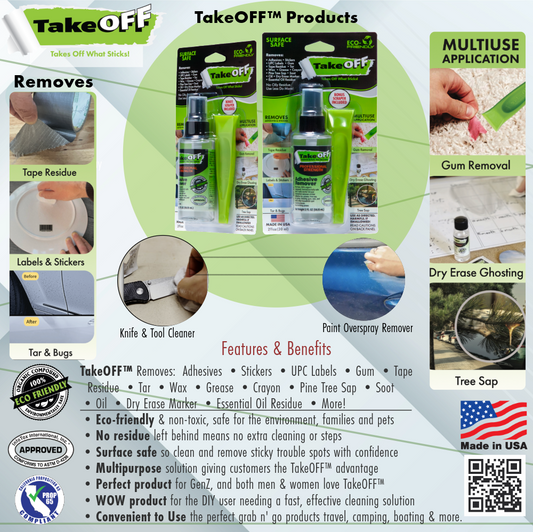Collection: Products
-
TakeOFF™ Adhesive Remover 1oz. Drip Bottle
Regular price $4.50 USDRegular priceUnit price / per -
TakeOFF™ Adhesive Remover 2oz. Spray Bottle
Regular price $7.99 USDRegular priceUnit price / per -
TakeOFF™ Adhesive Remover 4oz. Spray Bottle
Regular price $11.99 USDRegular priceUnit price / per -
TakeOFF™ Adhesive Remover Box of 25 Individual Wipes
Regular price $19.99 USDRegular priceUnit price / per -
TakeOFF™ Adhesive Remover One Gallon Bottle
Regular price $89.00 USDRegular priceUnit price / per -
TakeOFF™ Adhesive Remover Six Pack of Individual Wipes
Regular price $5.99 USDRegular priceUnit price / per -
TakeOFF™ Adhesive Remover Ultimate Starter Kit Bundle
Regular price $19.99 USDRegular priceUnit price / per -
TakeOFF™ Products Original Clear Liquid Solution- 2 Ounce Spray Bottle Bundled with Surface Safe Scraper
Regular price $10.99 USDRegular priceUnit price / per
What Makes Adhesive Residue So Hard to Remove?
The Sticky Truth Behind Adhesive Residue
We’ve all been there—peeling off a label or removing tape, only to be left with a tacky, dirt-attracting mess. But why is adhesive residue so stubborn? The answer lies in chemistry, surface science, and the way adhesives are engineered to bond… and stay bonded.
Why Is It So Hard to Clean?
1. Adhesives Are Designed to Grip
Most tapes and glues use pressure-sensitive adhesives (PSAs) that are built to create a strong, lasting bond—often at a microscopic level. When you remove the top layer (the sticker or tape), the sticky polymers stay behind.
🧬 Key Fact: Many adhesives don’t “dry” in the traditional sense. They remain soft and flexible—meaning they cling to uneven surfaces like a second skin.
2. Surface Tension & Pores
Surfaces like plastic, glass, wood, or metal all have different porosity and surface energies. Adhesives seep into these microscopic textures, making them incredibly difficult to remove completely without damaging the surface.
📏 Smooth ≠ Clean: Even seemingly flat materials like glass contain tiny imperfections that trap sticky residues.
3. Heat & Time Make It Worse
Exposure to heat, pressure, and time makes the adhesive harder, stickier, and more integrated with the surface. This is why old price tags, decals, or duct tape residue are so tough to clean off.
So What Actually Works?
Traditional Solvents? Kind of.
Alcohol, acetone, and other aggressive solvents can work—but they come with risks. Many of them:
Why TakeOFF™ Is Different
TakeOFF™ is a non-toxic, biodegradable adhesive remover engineered to break down sticky polymers without harming the surface underneath. It works on:
Plant-Based. Safe. Effective. TakeOFF™ removes the problem—not just smears it around.

